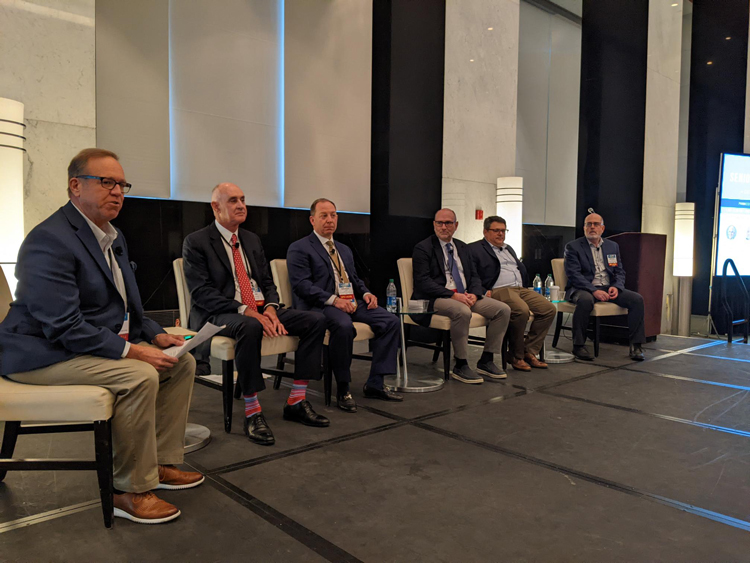PHILADELPHIA — Operators in the seniors housing industry have long been awaiting the incoming demographic wave of baby boomers reaching retirement age.
Every day in the U.S., 10,000 people turn 65, and the number of older adults will more than double over the next several decades to top 88 million people and represent over 20 percent of the population by 2050. The oldest boomers are now 76.
But this wave of customers will have very different desires than existing seniors housing residents, according to Tod Petty, chief operations officer at Lloyd Jones Senior Living.
“We know demographics and psychographics are rapidly changing. Think of the success of The Villages [a famous retirement community in Florida]. They’re drawn to live their best life. It is the last hurrah for many people to be relevant.”
Petty’s comments came during a panel titled “The Development Outlook: Experts Analyze the Smartest Plays for Developers in 2022” during France Media’s InterFace Seniors Housing Northeast conference. The event was held in Philadelphia on Dec. 2.
Petty moderated the panel, which also included Stephen Bailey, senior vice president of new business development, Kendal Corp.; Michael Gordon, senior vice president of acquisitions and development, EPOCH Senior Living; Scott Gensler, vice president of business development and regulatory affairs, Erickson Senior Living; Michael Uccellini, president and CEO, The United Group of Companies; and Joe McElwee, principal – development, Capitol Seniors Housing.
One of the much-discussed topics was development of active adult properties. The product type offers fewer services, but offers an active lifestyle for retirees. Because of this, many panelists see it as the first housing type to benefit from aging baby boomers.
“The most overrated demographic for assisted living and memory care is the baby boom generation,” said McElwee. “The oldest baby boomer is still 10 years away from needing our services.”
McElwee noted that Capitol Seniors Housing is developing active adult communities in “the Southern states that have the highest growth rates for that type of development.”
United Group has been developing active adult communities since the 1990s, and Uccellini said the sector is thriving.
“There was a flight, pre-COVID, of seniors to the urban core,” said Uccellini. “This product type did really well during COVID. Our occupancy and rent growth was really good.”
Uccellini noted that the average resident age is early 70s, and residents largely already live in the community or are “baby chasers” moving to be closer to their grandchildren. These seniors are extremely active, he noted, and amenities will require adjustment to meet that lifestyle.
“As our demand pool changes to baby boomers, our programs need to change,” said Uccellini. “We are expanding our fitness facilities and our yoga rooms, and we’re putting yoga areas outside. You might have running clubs or golf clubs.”
Bailey said Kendal is partnering with colleges and universities to offer intergenerational learning programs.
“We have a strong interest in developing communities along with colleges. We’re moving our corporate office to the campus of the University of Delaware. There are benefits for the seniors, the students and the universities.”
Gordon said that EPOCH is already seeing its independent living communities growing, and that “pre-lease activity has blown us away” for its communities under development.
“In terms of that unmet swell that’s coming, we’re looking to partner with a company to build large campuses of active adult, with Phase II being assisted living and memory care. That will be a great feeder in those markets.”
Erickson is largely focused on large entrance-fee continuing care retirement communities (CCRCs), and Gensler noted that the average move-in age starts around 78 years old. That means the baby boomers are just two years away from becoming their target demographic.
“It’s pretty hard for us to build enough supply to actually service the population that’s coming,” said Gensler. “We’re really bullish about the future. We have lots of new sites we’re planning and working on.”
— Jeff Shaw

